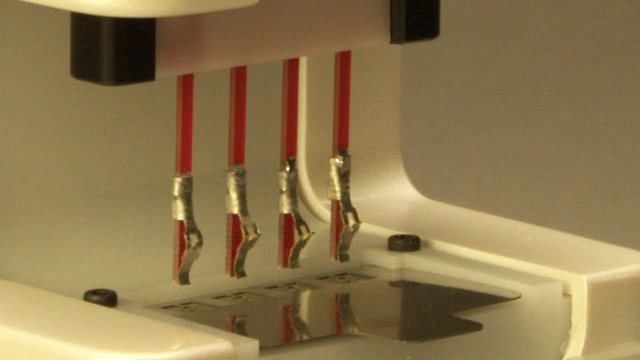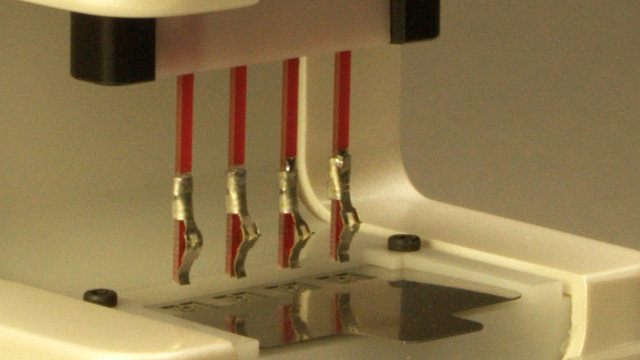Pulling DNA from the cell that surrounds it may be a vital process to modern genomics, but it’s also a cumbersome and time-consuming pain in the arse, “like collecting human hairs using a construction crane,” as Jae-Hyun Chung, UW associate professor of mechanical engineering, puts it. Not anymore, though. His handheld device will suck DNA straight from your bodily fluids in a matter of minutes.
The current method of DNA extraction requires such a complex procedure that the process alone has spawned an industry worth $US3 billion annually. First you have to break the cell open, either physically, chemically, or sonically. Then you have to apply a detergent to remove the membrane lipids, a protease to remove any attached proteins, and RNase to strip off the RNA.
After that, you need to precipitate the DNA in alcohol using a centrifuge and add a chelating agent like magnesium to prevent the previously-added enzymes from eating the DNA. The whole process takes upwards of a half hour and involves some seriously toxic chemicals to boot.
So, instead of breaking into cells and forcefully dragging out the DNA, this new device developed at the University of Washington in collaboration with the Bellevue based NanoFacture company, entices the DNA to come on its own accord — without all the toxic chemicals or waiting around.
The device dips four specially designed, electrically charged microscopic probes into a fluid sample. This charge attracts molecules within the fluid but, and here’s the kicker, only the small DNA-sized molecules actually stick to the probe. Bigger molecules, like proteins, can’t gain purchase on the probe and are left in the fluid when the probe is removed two minutes later with its haul of DNA. That’s a tenth of the time it takes to extract genetic data using current methods.

According to the development team, this device can be scaled up to accomodate as many as 96 samples simultaneously, which should make short work of even the most intricate of forensic investigations. The device has already received $US2.05 million development funding from the UW centre for Commercialization and the National Science Foundation and is currently being marketed to hospitals and medical device distributors so these should start popping up doctors offices sooner rather than later.
And if we could somehow figure out how to combine this technology with this Panasonic one-hour sequencer, we’d be able to fully extrapolate a person’s genetic makeup in less time than it takes to sit through The 6th Day. [UW – Wikipedia – Images: UW/NanoFacture/KNR]
